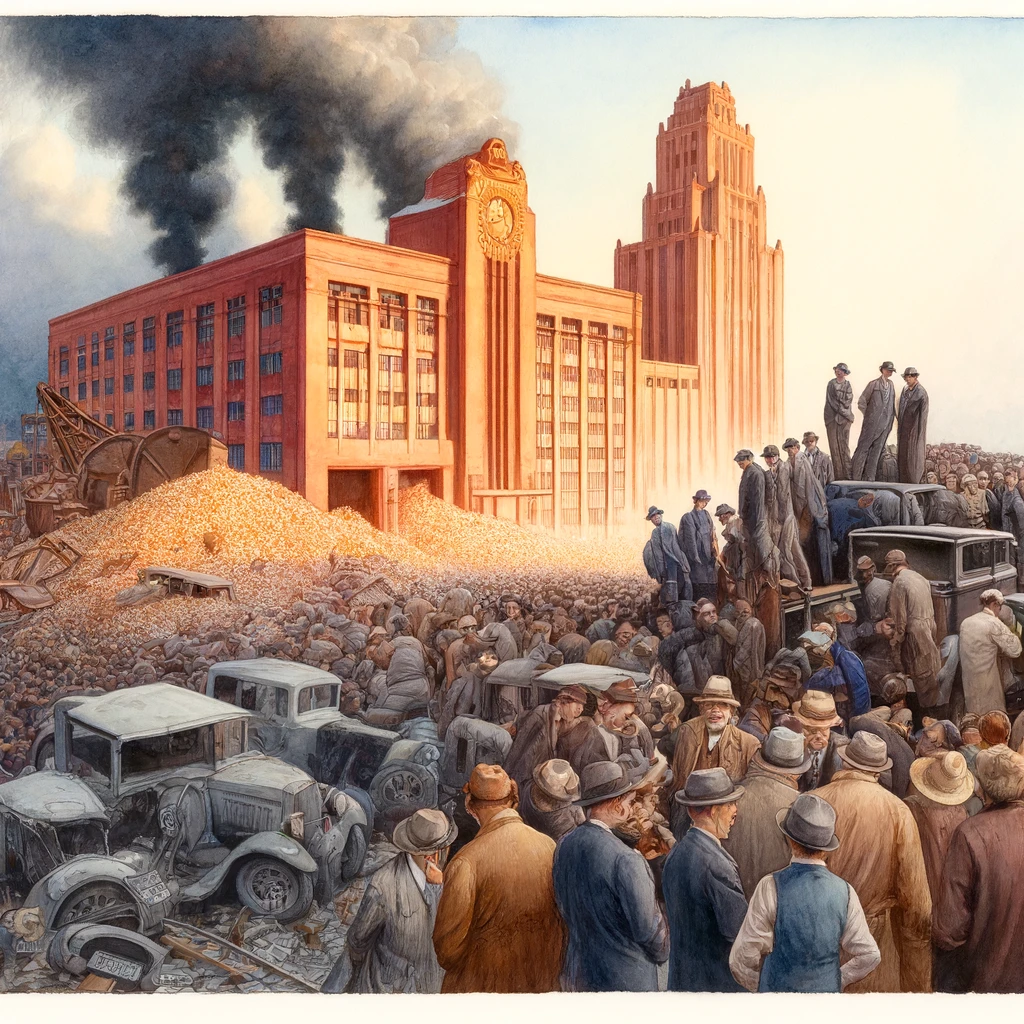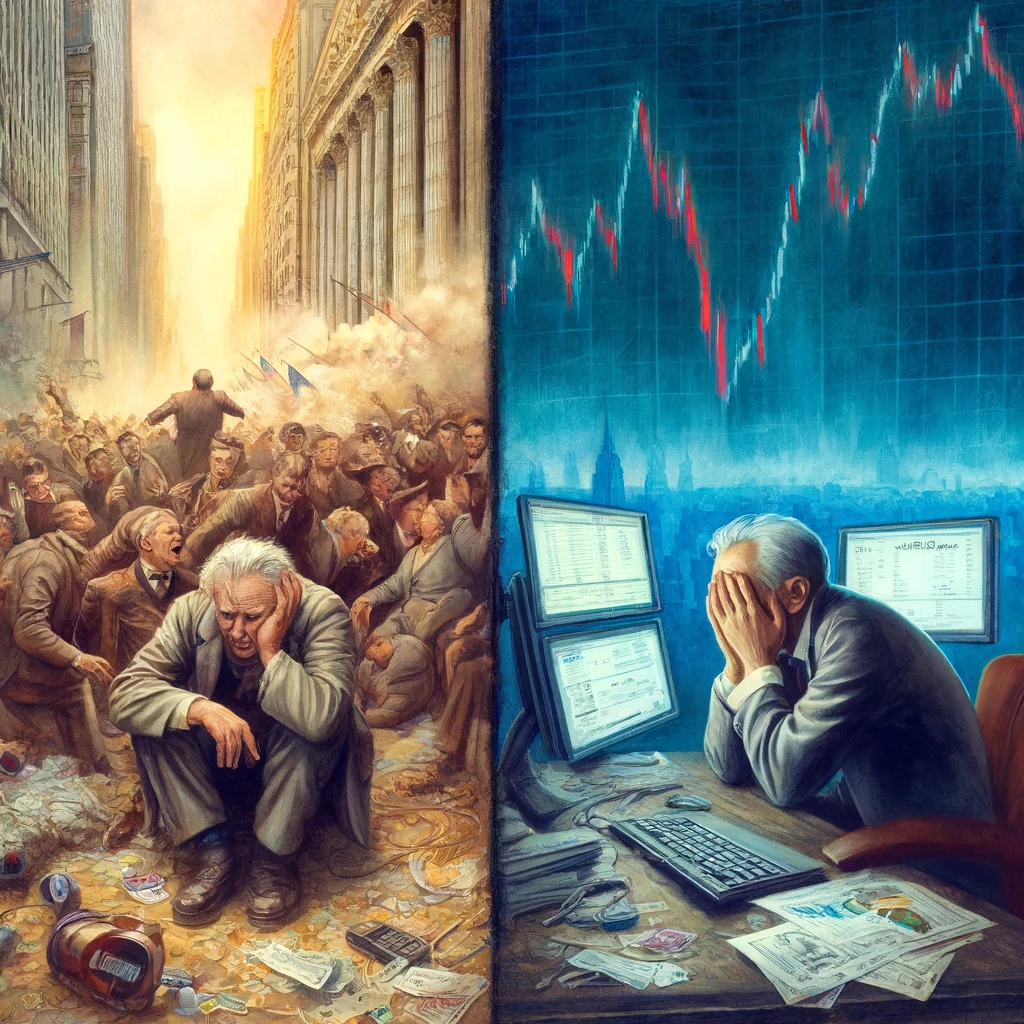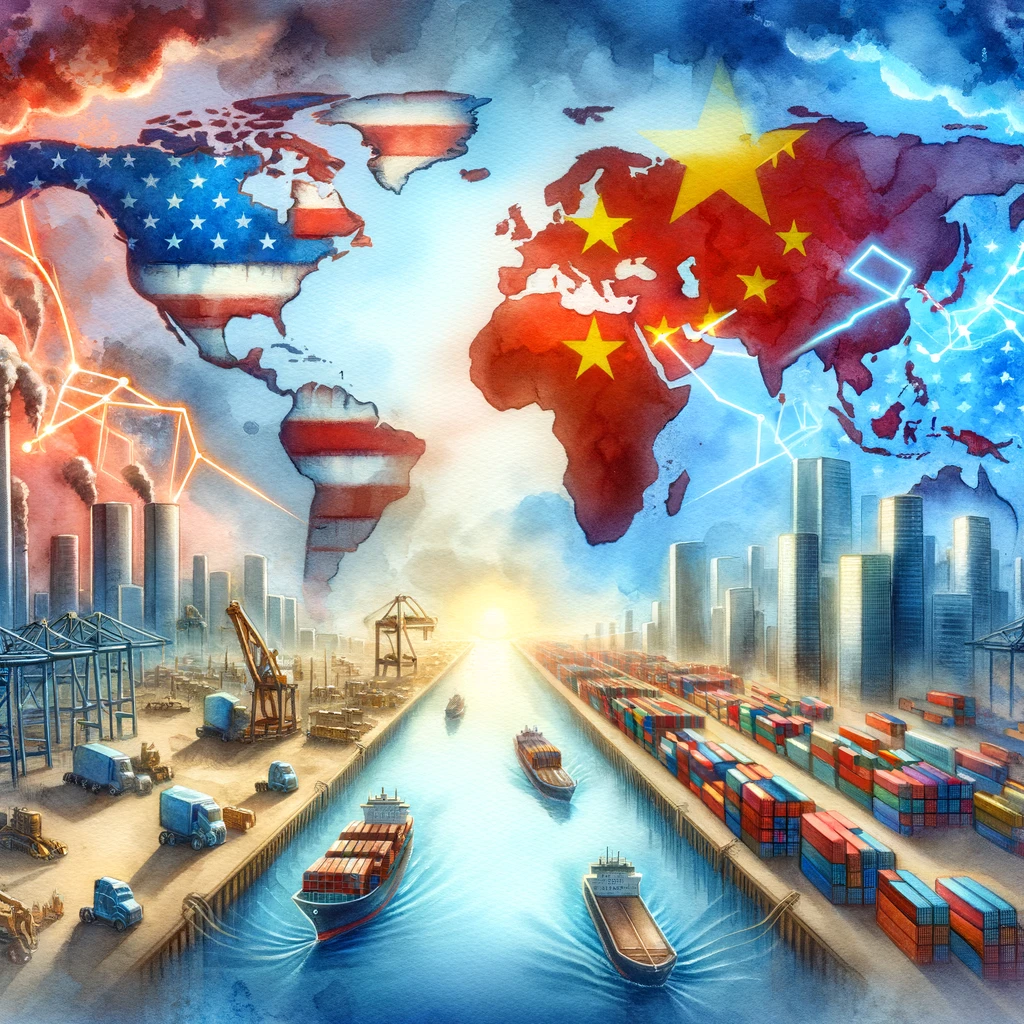Major Economic crisis
The Great Depression of 1929 stands as one of the most profound and far-reaching economic crises in history. Its impacts were felt globally, causing massive economic, social, and political upheavals. Understanding the causes, effects, and responses to the Great Depression provides valuable insights into economic vulnerabilities and policy-making.

1. Causes of the Great Depression
Overproduction and Stock Market Crash
In the 1920s, technological advancements and mass production led to significant increases in industrial output. However, the wages of workers did not keep pace with the production levels, leading to an imbalance between supply and demand. Companies continued to produce more goods than the market could consume, resulting in surplus inventories.
The stock market, fueled by speculative investments, reached unsustainable levels. Many investors bought stocks on margin, meaning they borrowed money to buy more stocks, betting that prices would continue to rise. The bubble burst on October 29, 1929, known as Black Tuesday, when stock prices plummeted, wiping out billions of dollars in paper wealth and triggering a chain reaction of financial losses and business failures.

Financial Instability and Bank Failures
The collapse of the stock market led to widespread panic and a loss of confidence in financial institutions. Banks, which had invested heavily in the stock market, faced huge losses. As people rushed to withdraw their savings, many banks were unable to meet the demand, leading to bank runs and closures. Over 9,000 banks failed during the 1930s, erasing the savings of millions of Americans and exacerbating the economic downturn.
Gold Standard Rigidity and Global Trade Contraction
At the time, many countries adhered to the gold standard, which tied their currencies to a specific amount of gold. This system limited the ability of governments to increase the money supply during economic downturns. As economic conditions worsened, countries devalued their currencies to make their exports cheaper and more competitive, leading to a cycle of competitive devaluations and trade barriers.
Global trade contracted sharply, with international trade volumes dropping by about 50% from 1929 to 1933. The Smoot-Hawley Tariff Act of 1930 in the United States, which imposed high tariffs on imported goods, further reduced trade and worsened the global economic slump.
2. Impact on Global Economy
Severe Unemployment and Deflation
The Great Depression led to unprecedented levels of unemployment worldwide. In the United States, unemployment soared from 3% in 1929 to 25% in 1933. Similar trends were observed in other industrialized countries, leading to widespread poverty and hardship.
Deflation, a general decline in prices, became prevalent as demand for goods and services plummeted. Falling prices led to reduced business revenues, forcing companies to cut wages and lay off workers, which in turn further decreased consumer spending and exacerbated the economic downturn.

Collapse of International Trade
The contraction of international trade had severe implications for countries dependent on exports. Commodity prices, such as those for agricultural products and raw materials, collapsed, leading to significant income losses for producers. Countries that relied on exporting goods to finance their imports faced severe balance of payments crises, further deepening the global economic slump.
Long-term Economic and Social Repercussions
The Great Depression had long-lasting effects on the global economy. Many countries experienced a decline in living standards, and the economic hardship contributed to social unrest and political instability. In Germany, for instance, the economic crisis facilitated the rise of Adolf Hitler and the Nazi Party, leading to World War II.
The depression also reshaped economic thinking and policy-making, leading to the adoption of new economic policies and the establishment of welfare state models aimed at preventing such a crisis from recurring.
3. Government Responses and Recovery Measures
New Deal Policies in the USA
In response to the Great Depression, the U.S. government, under President Franklin D. Roosevelt, implemented a series of programs and reforms known as the New Deal. These included measures to provide relief for the unemployed, stimulate economic recovery, and reform the financial system. Key programs included the Civilian Conservation Corps (CCC), which provided jobs in public works, and the Social Security Act, which established a system of unemployment insurance and old-age pensions.
Keynesian Economic Policies
Economist John Maynard Keynes argued that during periods of economic downturn, governments should increase public spending to stimulate demand and pull the economy out of recession. This approach, known as Keynesian economics, advocated for active government intervention to manage economic cycles and promote full employment. Keynesian policies became widely adopted in the post-World War II era, shaping economic policy in many countries.
Rise of Welfare State Models
The economic and social impacts of the Great Depression led to the establishment of welfare state models in various countries. Governments expanded social safety nets, including unemployment benefits, healthcare, and housing assistance, to protect citizens from economic hardships. These measures aimed to provide a basic standard of living and reduce the social impact of economic fluctuations.
4. Lessons Learned
Importance of Financial Regulation
One of the key lessons from the Great Depression was the need for robust financial regulation to prevent speculative excesses and ensure financial stability. The crisis led to the establishment of regulatory frameworks, such as the Glass-Steagall Act in the United States, which separated commercial and investment banking and introduced safeguards to protect depositors.
Role of Government Intervention
The Great Depression demonstrated the critical role of government intervention in managing economic crises. Active fiscal and monetary policies, including public spending and central bank interventions, were essential in stabilizing economies and promoting recovery. The crisis underscored the limitations of laissez-faire economics and the need for proactive government measures to address economic challenges.
Need for International Economic Coordination
The global nature of the Great Depression highlighted the interconnectedness of national economies and the need for international economic coordination. The crisis led to the establishment of institutions such as the International Monetary Fund (IMF) and the World Bank, aimed at promoting international economic stability and cooperation. These institutions have played a crucial role in managing subsequent global economic challenges.
5. Comparison with Modern Crises
Similarities with the 2008 Financial Crisis
The 2008 Financial Crisis, like the Great Depression, was triggered by financial excesses and the collapse of a speculative bubble. Both crises involved significant financial instability, bank failures, and widespread economic contraction. The global nature of both crises underscored the vulnerabilities of interconnected financial systems and the need for coordinated policy responses.

Policy Responses and Economic Outcomes
In response to the 2008 crisis, governments and central banks implemented large-scale stimulus measures, including bailouts for financial institutions and fiscal stimulus packages. These interventions helped stabilize financial markets and support economic recovery. The crisis also led to significant reforms in financial regulation, including the Dodd-Frank Act in the United States, aimed at reducing systemic risk and enhancing financial stability.
Influence on Contemporary Economic Thought
The Great Depression and the 2008 Financial Crisis have both significantly influenced contemporary economic thought and policy-making. They have highlighted the importance of financial regulation, the role of government intervention in stabilizing economies, and the need for international economic cooperation. These crises have shaped the development of macroeconomic policies aimed at promoting sustainable growth and preventing future economic downturns.
Understanding the Great Depression and its far-reaching impacts provides valuable lessons for managing modern economic challenges. The insights gained from this historic crisis continue to inform policy decisions and shape the global economic landscape, emphasizing the need for vigilance, regulation, and cooperation in addressing economic vulnerabilities.
Data Reference Points:
- Unemployment Rate: During the Great Depression, the U.S. unemployment rate peaked at 25% in 1933.
- Bank Failures: Over 9,000 banks failed during the 1930s in the United States.
- Trade Contraction: International trade volumes dropped by approximately 50% from 1929 to 1933.
- GDP Decline: The U.S. GDP contracted by around 30% during the Great Depression.


